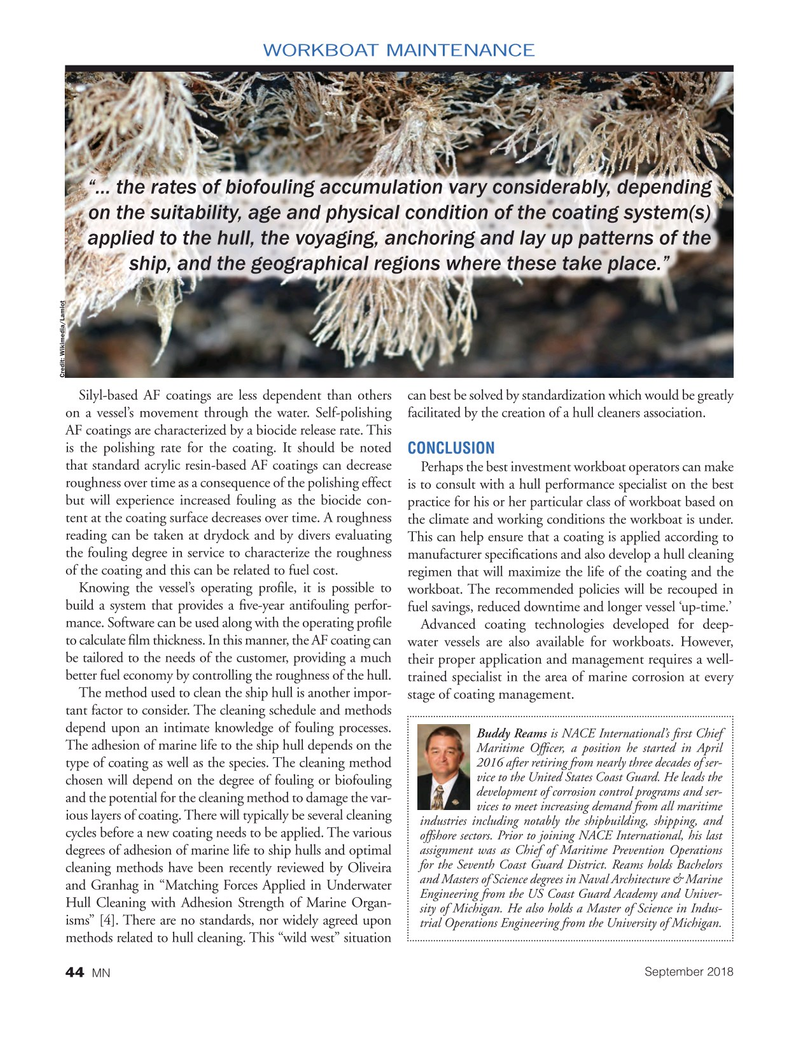
Page 44: of Marine News Magazine (September 2018)
Offshore Annual
Read this page in Pdf, Flash or Html5 edition of September 2018 Marine News Magazine
WORKBOAT MAINTENANCE “… the rates of biofouling accumulation vary considerably, depending on the suitability, age and physical condition of the coating system(s) applied to the hull, the voyaging, anchoring and lay up patterns of the ship, and the geographical regions where these take place.”
Credit: Wikimedia/Lamiot
Silyl-based AF coatings are less dependent than others can best be solved by standardization which would be greatly on a vessel’s movement through the water. Self-polishing facilitated by the creation of a hull cleaners association.
AF coatings are characterized by a biocide release rate. This is the polishing rate for the coating. It should be noted
CONCLUSION that standard acrylic resin-based AF coatings can decrease
Perhaps the best investment workboat operators can make roughness over time as a consequence of the polishing effect is to consult with a hull performance specialist on the best but will experience increased fouling as the biocide con- practice for his or her particular class of workboat based on tent at the coating surface decreases over time. A roughness the climate and working conditions the workboat is under. reading can be taken at drydock and by divers evaluating This can help ensure that a coating is applied according to the fouling degree in service to characterize the roughness manufacturer speci

 43
43

 45
45
